SG-8R30 Hub Gear, Unmodified
My first Shimano hub gear (an SG-8R25) only lasted two years before failing catastrophically. Dismantling it after failure it was evident that it had let water inside and there was lots of corrosion. It's not a pretty sight, but the full detail (and nasty pictures) is listed on another page.
So, I bought a new hub. The replacement was an SG-8R30, which superseded the SG-8R25. This page describes the changes Shimano had made, and how it performed in service (until I modified it even more.
The nasty old hub
A reminder of what the nasty old (SG-8R25) hub looked like after two years and three weeks of daily use. It's not a pretty sight, but the full detail (and nasty pictures) is listed on another page.
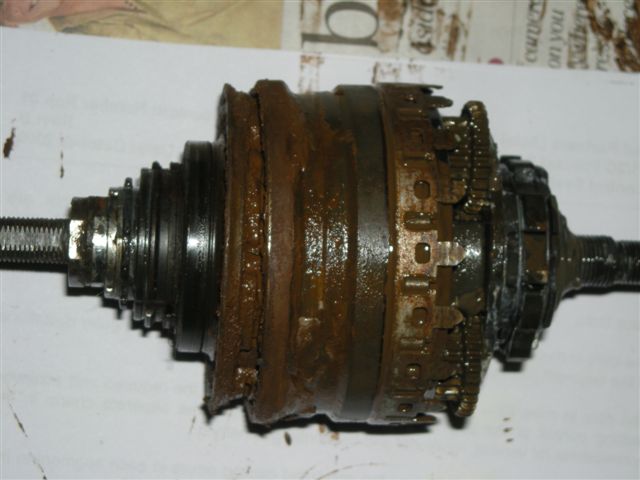
The shiny new hub
The two hubs are externally pretty similar. Both are 'premium' Nexus 8. Functionally, the new one has a 'silent clutch' rather than a ratchet freewheel, but otherwise they are both 8 speed, roller brake compatible, and use the same shifter and connector.
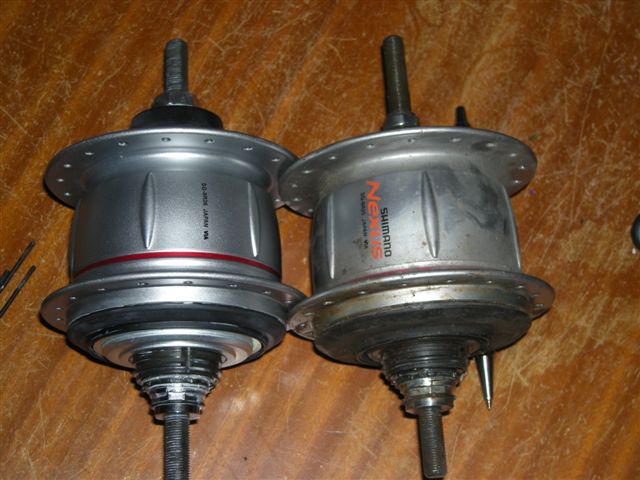
What has changed is the sealing of the end where the innards are withdrawn.
On the old hub, the end of internal unit protrudes out through a plastic cap. The plastic cap is a tight press fit into the alloy shell - it rotates with the hub shell. The dark metal bits on the axle rotate with the sprocket, and the silver bits are fixed with the frame (ie, don't rotate). At the interface between silver and dark there is a lugged washer which is what the shift arrangements connect to - it's more visible on the new hub, but it's in the same place on the old.
On the new hub, the sealing is much more complex. The plastic push-fit cap is in the same place, but it now has ridges and lips and stuff on it. The outermost lip overlaps a new metal cover which is tightly clamped against the sprocket (ie, rotates with the sprocket).
If you imagine a drip rolling down the face from the top, on the old, it would roll down the cap, then settle on the protruding (dark metal) axle. It is now resting against a single wiper seal, behind which is all the gubbins. On the new hub, however, it starts down the cap, is deflected out on the lip, and if it drops off the tip of that lip, it is outside the metal disk, and does not get to any seal. In fact, it will come up against the sprocket, and presumably be deflected off to the teeth and ejected. If the water does get behind the metal disk, it still has the same seal to penetrate as on the old. Whether this arrangement is enough of an improvement, only time would tell.
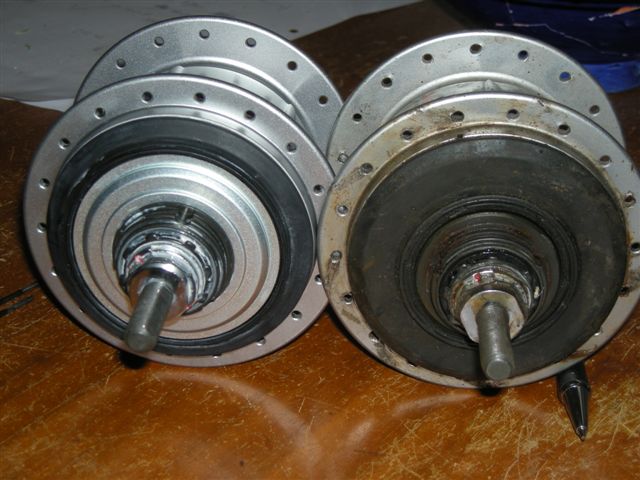
In-Service Findings
Since the hub was behaving itself, I left well alone. However, in January 2010 (ie, after just over a year of daily commuter service) curiosity got the better of me, so I opened it up.
I'm pleased to say the new hub is very nice inside. Yes it only has a little over half the mileage the other one had at failure (though actually it has done two Decembers and two Januarys, which is all the first hub managed), but it still has clean white grease, and nicely smooth-polished balls, rollers and races.
The contrast with the picture at the top of the page is quite striking!
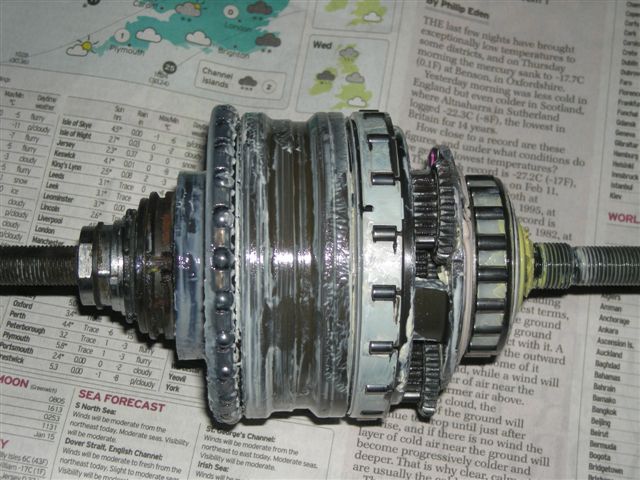
The carrier at extreme left is what got mangled in the first hub.
This is exactly how it came out of the shell - I haven't cleaned it up or re-greased anything at all here. All this is the original grease, after about 14 months daily use, including two Decembers and two Januarys.
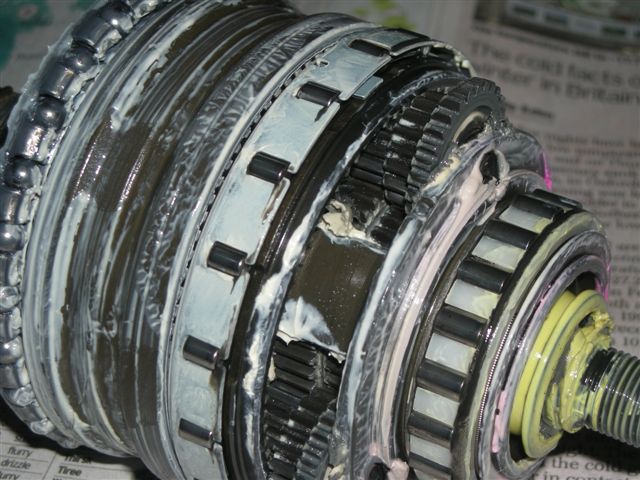
This is the race that those balls run on (I've wiped grease off this to look at the surface).
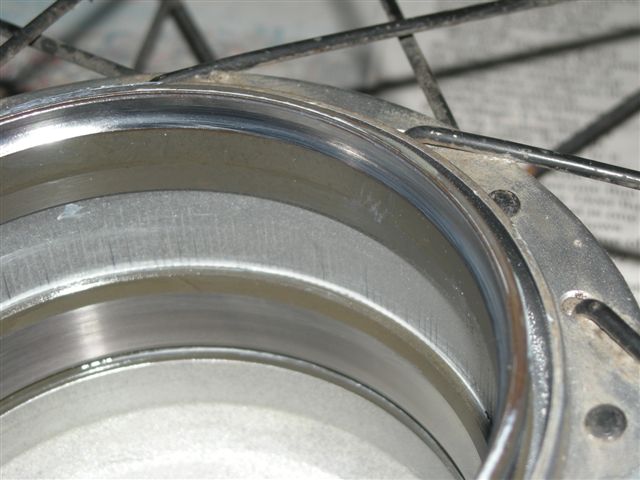
The whole of the inside of the shell looks good (this is also after being wiped clean).
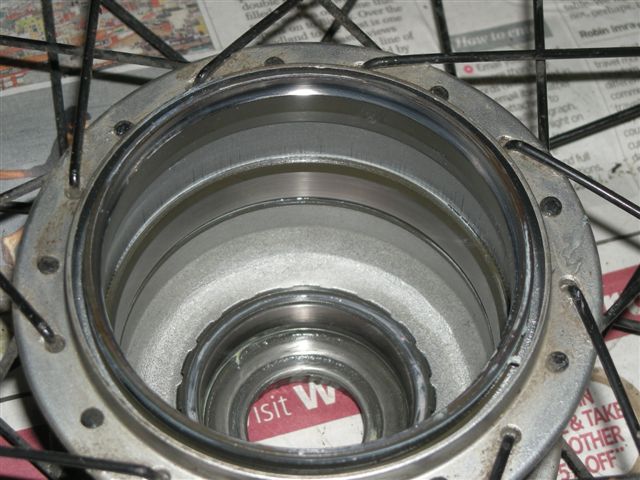
While the wheel was in pieces with teh innards out of teh shell, I fitted the oil port I first thought about when the new hub was brand new. There's a whole page about the planning and implementation of that. Given how well it's doing, I'm not sure it's needed, but I decided it probably wouldn't hurt.